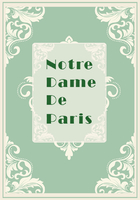
第41章 BOOK Ⅲ(2)
And if we ascend the Cathedral,passing over a thousand barbarisms of every deion—what has become of the charming little belfry,fretted,slender,pointed,sonorous,which rose from the point of intersection of the transept,and every whit as delicate and as bold as its neighbour the spire(likewise destroyed)of the Sainte-Chapelle,soared into the blue,farther even than the towers.An architect'of taste'(1787)had it amputated,and deemed it sufficient reparation to hide the wound under the great lead plaster which looks like the lid of a sauce-pan.
Thus has the marvellous art of the Middle Ages been treated in almost every country,but especially in France.In its ruin three distinct factors can be traced,causing wounds of varying depths.First of all,Time,which has gradually made breaches here and there and gnawed its whole surface;next,religious and political revolutions,which,in the blind fury natural to them,wreaked their tempestuous passions upon it,rent its rich garment of sculpture and carving,burst in its rose-windows,broke its necklets of arabesques and figurines,tore down its statues,one time for their mitres,another time for their crowns;and finally,the various fashions,growing ever more grotesque and senseless,which,from the anarchical yet splendid deviations of the Renaissance onwards,have succeeded one another in the inevitable decadence of Architecture.Fashion has committed more crimes than revolution.It has cut to the quick,it has attacked the very bone and framework of the art;has mangled,pared,dislocated,destroyed the edifice—in its form as in its symbolism,in its coherence as in its beauty.This achieved,it set about renewing—a thing which Time and Revolution,at least,never had the presumption to do.With unblushing effrontery,'in the interests of good taste,'it has plastered over the wounds of Gothic architecture with its trumpery knick-knacks,its marble ribbons and knots,its metal rosettes—a perfect eruption of ovolos,scrolls,and scallops;of draperies,garlands,fringes;of marble flames and brazen clouds;of blowzy cupids and inflated cherubs,which began by devouring the face of art in the oratory of Catherine de Medicis,and ended by causing it to expire,tortured and grimacing,two centuries later,in the boudoir of Mme.Dubarry.
Thus,to sum up the points we have just discussed,the ravages that now disfigure Gothic architecture are of three distinct kinds:furrows and blotches wrought by the hand of Time;practical violence—brutalities,bruises,fractures—the outcome of revolution,from Luther down to Mirabeau;mutilations,amputations,dislocation of members,restorations,the result of the labours—Greek,Roman,and barbarian—of the professors following out the rules of Vitruvius and Vignola.That magnificent art which the Goths created has been murdered by the Academies.
To the devastations of Time and of Revolutions—carried out at least with impartiality and grandeur—have been added those of a swarm of school-trained architects,duly licensed and incorporated,degrading their art deliberately and,with all the discernment of bad taste,substituting the Louis XV fussiness for Gothic simplicity,and all to the greater glory of the Parthenon.This is the kick of the ass to the dying lion;it is the ancient oak,dead already above,gnawed at the roots by worms and vermin.
How remote is this from the time when Robert Cenalis,comparing Notre-Dame at Paris with the far-famed Temple of Diana at Ephesus,'so much vaunted by the ancient pagans,'which immortalized Erostratus,considered the Gallican Cathedral'more excellent in length,breadth,height,and structure.'1
For the rest,Notre-Dame cannot,from the architectural point of view,be called complete,definite,classified.It is not a Roman church,neither is it a Gothic church.It is not typical of any style of architecture.Notre-Dame has not,like the Abbey of Tournus,the grave and massive squareness,the round,wide,vaulted roof,the frigid nudity,the majestic simplicity of the edifices which have their origin in the Roman arch.Nor is it like the Cathedral of Bourges,the splendid,airy,multiform,foliated,pinnacled,efflorescent product of the Gothic arch.Impossible,either,to rank it among that antique family of churches—sombre,mysterious,low-pitched,cowering,as it were,under the weight of the round arch;half Egyptian,wholly hieroglyphical,wholly sacerdotal,wholly symbolical;as regards ornament,rather overloaded with lozenges and zigzags than with flowers,with flowers than animals,with animals than human figures;less the work of the architect than the Bishop,the first transformation of the art still deeply imbued with theocratic and military discipline,having its root in the Byzantine Empire,and stopping short at William the Conqueror.Nor,again,can the Cathedral be ranked with that other order of lofty,aerial churches,with their wealth of painted windows and sculptured work,with their sharp pinnacles and bold outlines;communal and citizen—regarded as political symbols;free,capricious,untrammelled—regarded as works of art.This is the second transformation of architecture—no longer cryptic,sacerdotal,inevitable,but artistic,progressive,popular—beginning with the return from the Crusades and ending with Louis XI.